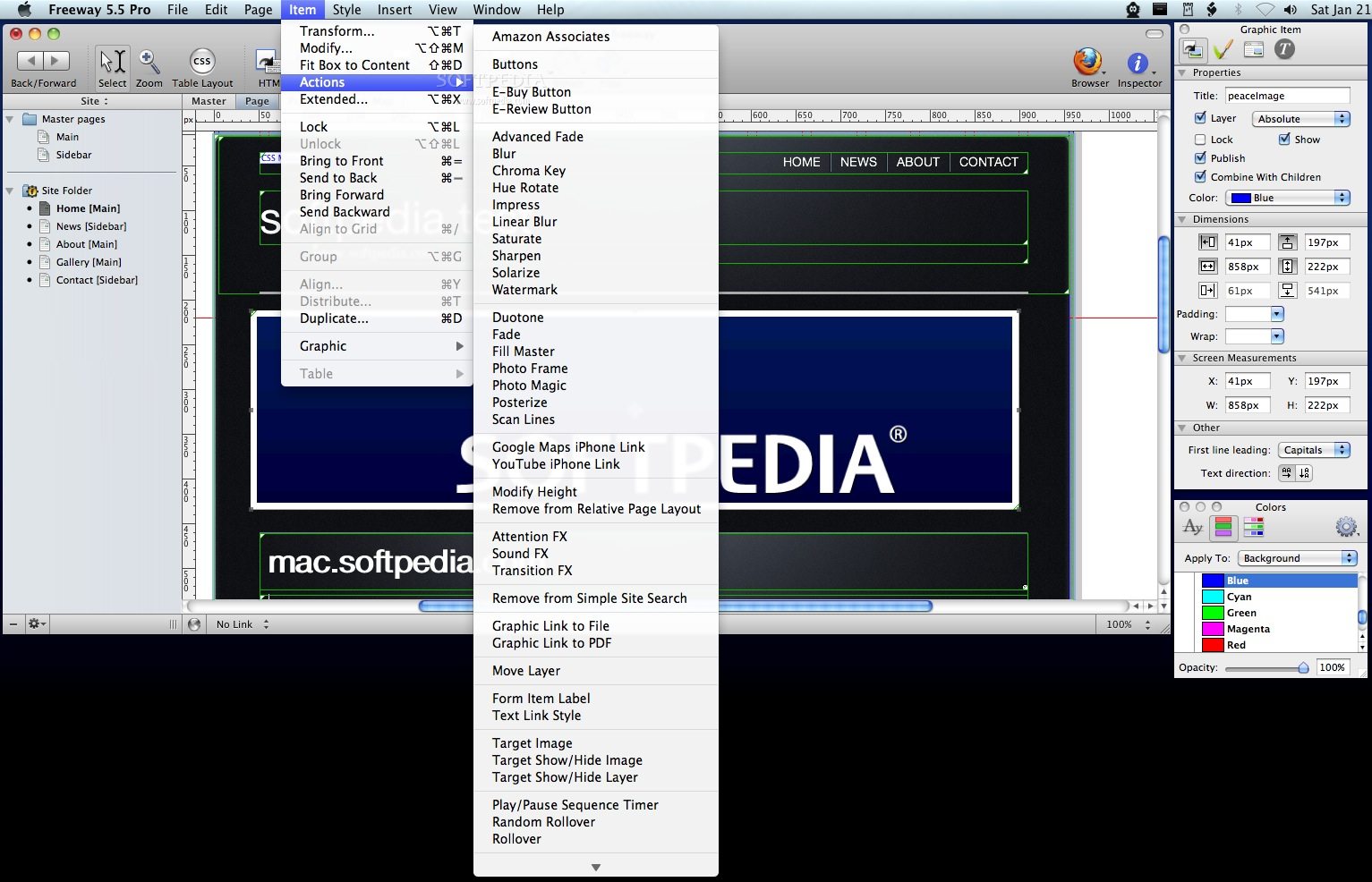

- #Freeway pro vs adobe golive pdf
- #Freeway pro vs adobe golive update
- #Freeway pro vs adobe golive code
#Freeway pro vs adobe golive update
But for loyal CyberStudio users, the $99 upgrade fee for such a minor update is a harsh introduction to the Adobe family. The improved table editing and JavaScript actions are welcome, as is the program’s newfound resistance to crashing. GoLive’s connections are sometimes less than robust, and the program can disconnect prematurely from the remote server.Īlthough Dreamweaver has pulled ahead in some areas, Adobe GoLive 4.0 is a good bet if you’re looking to invest in a professional Web tool. The new version’s stability and speed are an improvement over those of the shaky 3.1 version, although some users still report problems with FTP uploading to Web servers. On the other hand, GoLive can create tables from delimited text files, a feat Dreamweaver can’t match. GoLive’s table editing has also improved, although you still can’t give a table a background image, apply predetermined table styles, or sort the table’s contents as you can in Dreamweaver. Although JavaScript-savvy users can write new actions, GoLive’s extensibility lags far behind that of Dreamweaver, which lets you write JavaScript and HTML to create custom menu commands, inspector palettes, and other objects.

#Freeway pro vs adobe golive code
You can also create external JavaScript library files shared by and called from different pages in your site, reducing the amount of code per page and helping pages load faster. The update includes 14 new JavaScript actions that let you do useful things such as create and delete cookies, build slide shows, and control how content appears in frames. Earlier versions either reparsed and damaged such code or required you to put tags around code you wanted to protect GoLive 4.0 simply marks the code as foreign and leaves it unchanged. And GoLive now plays nice with non-HTML code such as XML.
#Freeway pro vs adobe golive pdf
The new version can also manage hyperlinks within PDF files on your site. On a more positive note, GoLive 4.0 improves on its predecessor’s already excellent site-management features, with a better site map, enhanced updating of links, and better support for absolute URL paths. Although the QuickTime editor works as promised, GoLive has only a fraction of the abilities of Adobe Premiere or After Effects it’s hard to see a compelling reason for including a watered-down video editor in a Web-page-creation tool. You can work with audio, video, and URL tracks in a timeline, and you can preview your movies within GoLive. The primary new feature in GoLive 4.0 is an integrated QuickTime editor that lets you create and edit QuickTime movies, modify existing movies, and apply any of the built-in QuickTime 3.0 transitions and filters. Despite the somewhat misleading version-number jump, GoLive 4.0 breaks little new groundadding mostly bug-fixes and feature refinementsand falls behind its chief competitor, Macromedia’s Dreamweaver 2, in innovation. Adobe has since renamed both the product and the update, releasing the new Adobe GoLive 4.0. When Adobe acquired GoLive earlier this year, users were awaiting a minor update from version 3.1 to 3.5 of GoLive’s flagship product, GoLive CyberStudio.


 0 kommentar(er)
0 kommentar(er)
